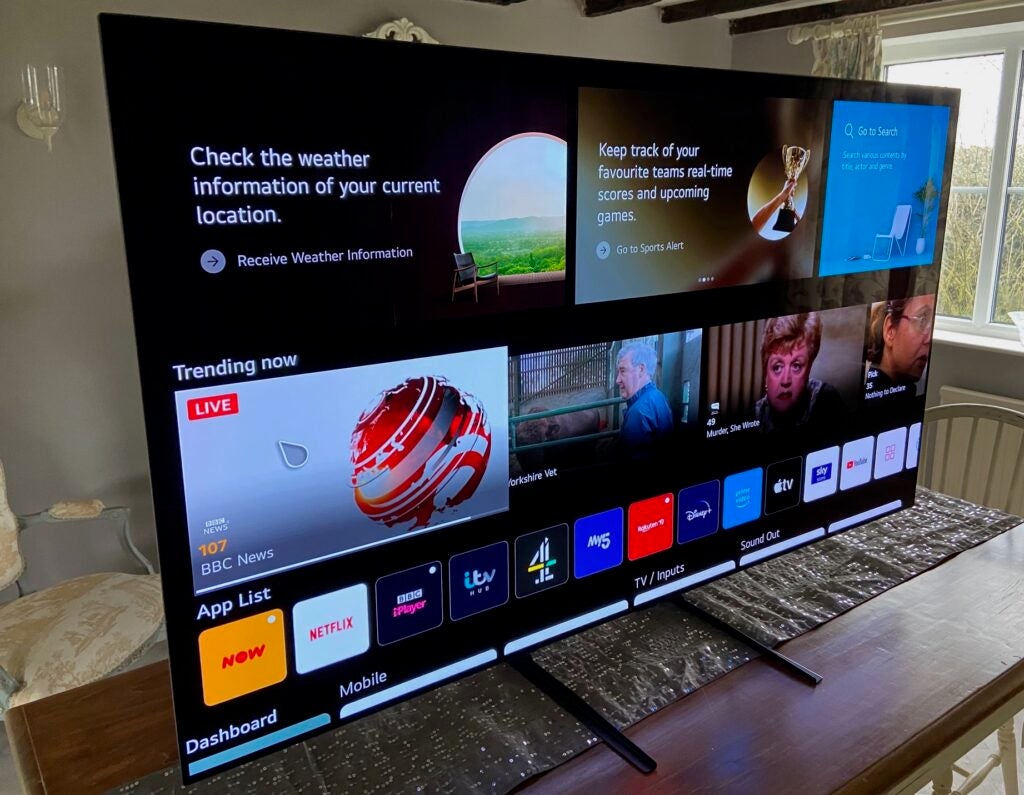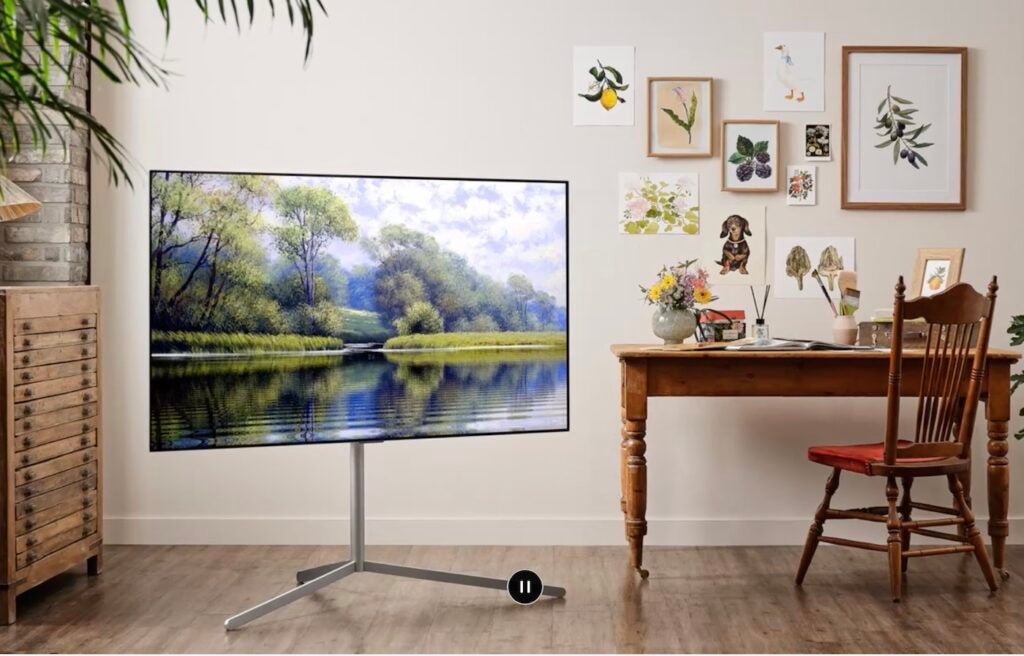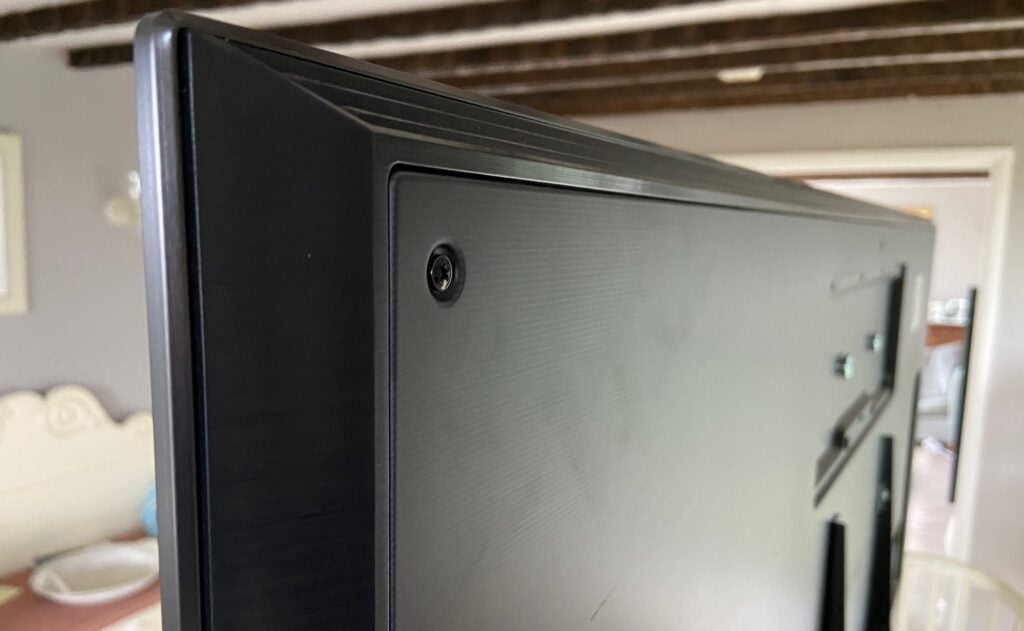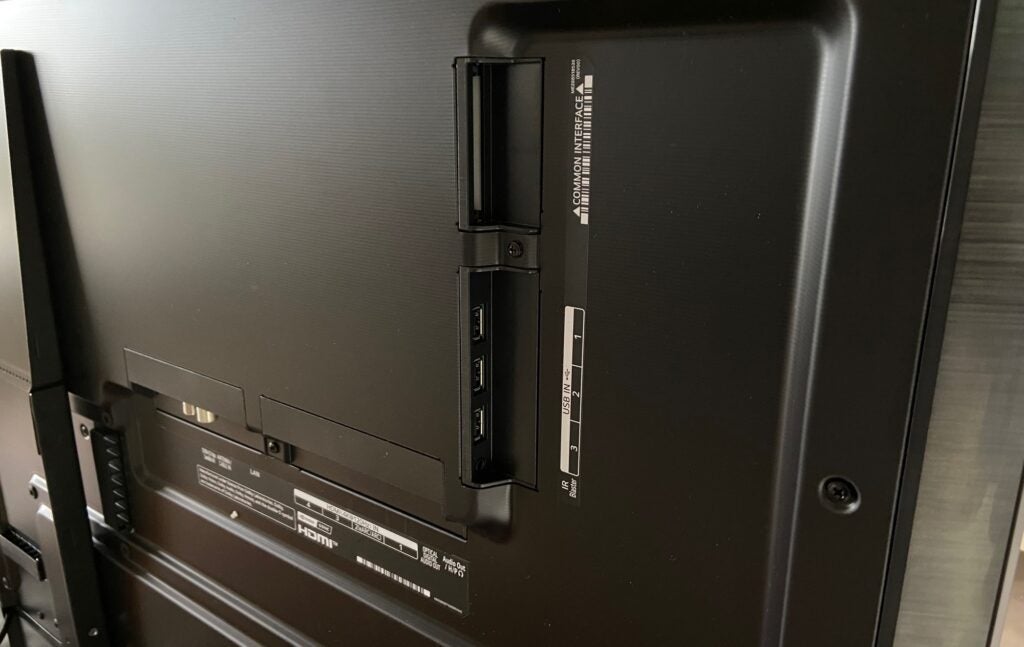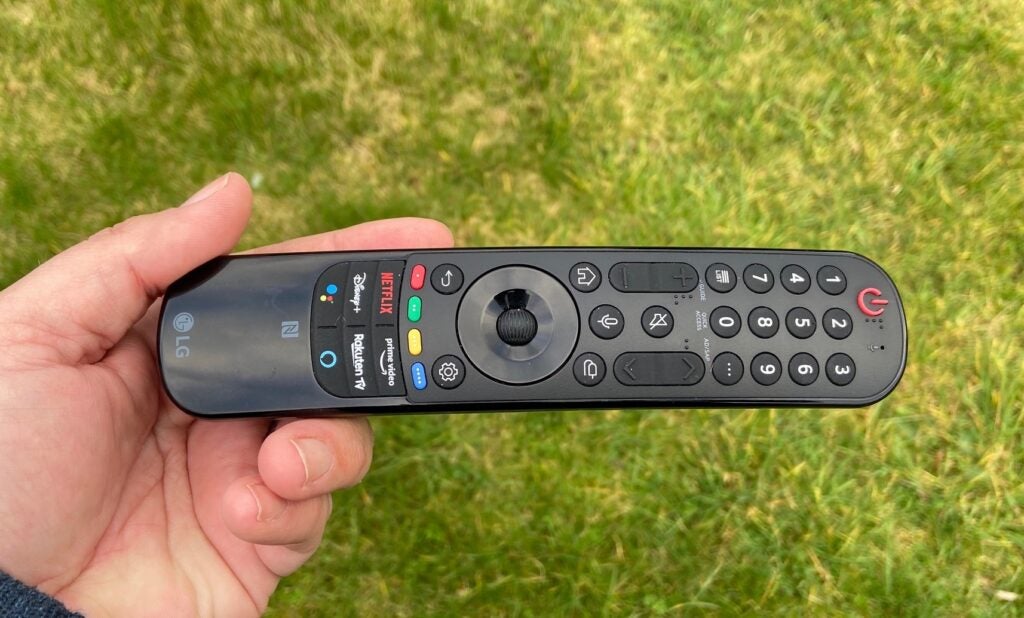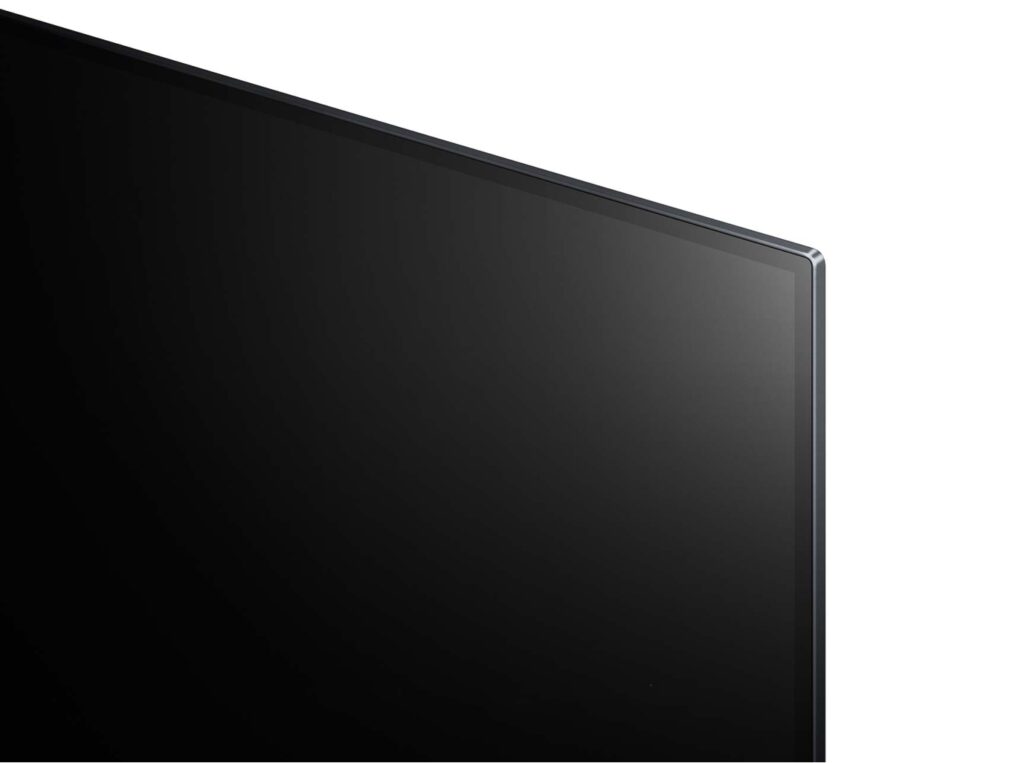LG OLED65G1 Review
The G1 introduces LG's first significant OLED hardware improvement for years with gorgeous results
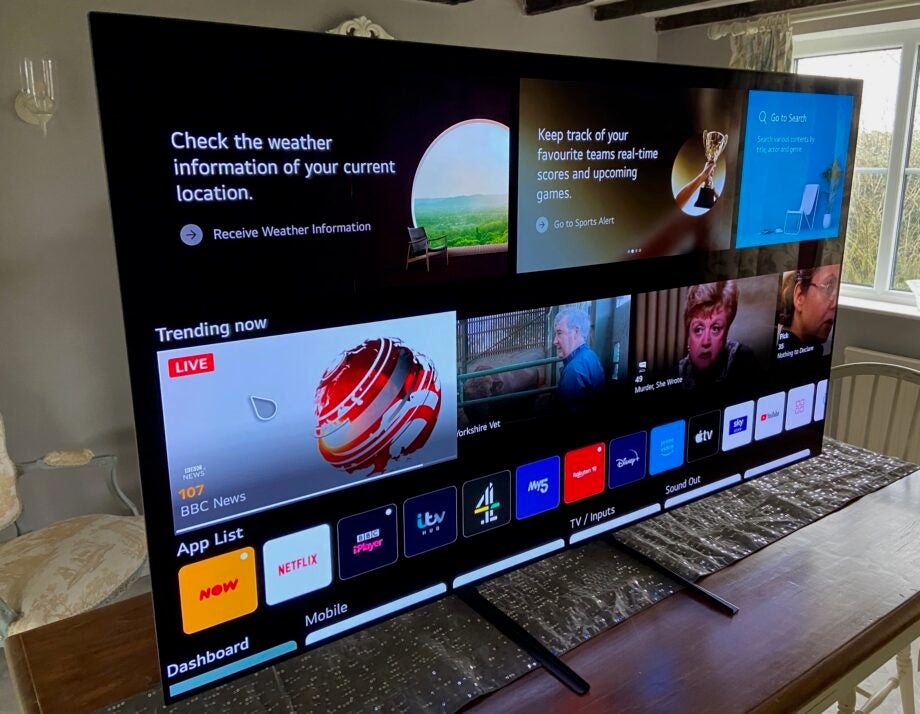

Verdict
Thanks to a new panel design, great new processing and some imaginative new gaming features, the OLED65G1 is easily the best TV LG has ever made.
Pros
- Sensational picture quality
- Outstanding gaming performance and features
- Elegant, slim design perfected for wall-hanging
Cons
- Fairly expensive for an LG OLED
- New webOS system feels like a work in progress
- No HDR10+ support
Key specifications
- New high-brightness OLED panel design
- Dolby Vision, HDR10 and HLG HDR support
- New webOS smart platform
- 4K/120Hz/VRR gaming support
- Game Optimiser system
For the past few years, most of the TVs in every new annual LG OLED TV range have only differed from each other around price, design and image processing. The core OLED panel specifications at their hearts have typically been the same across each range.
That’s changing in dramatic fashion for 2021, however, as LG introduces clearly defined OLED hardware ‘steps’. And right at the top of those steps you’ll find the G1 series.
LG G1 price and availability
The LG G1 (OLED65G1) has a price of £2999 / $3000 /€3500. The set will be available from all major electronics retailers, as well as directly from LG’s website in territories where direct manufacturer sales are permitted.
LG OLED65G1 design – Wall flower
- Slim, flat rear fits flush to your wall
- Ships with wall mount
- Desktop feet and new Gallery floorstand mount are optional extras
The LG G1 sports a very similar look to the Gallery TVs LG debuted in 2020. As such, you get a narrow, minimalist dark frame around the screen, and a slim, almost uniform-depth rear. The OLED65G1 is even slimmer than last year’s GX equivalent.
The look is expressly designed for wall mounting. In fact, the OLED65G1 only ships with a wall-mount bracket. The company has made improvement to this for 2021, so that it now fits within a slight recess on the TV’s rear panel, enabling the TV to sit completely flush to a wall.
If you don’t want to wall-mount the 65G1, desktop feet and new Gallery floorstand options are available – but only at an extra cost.
Boasting excellent build quality, too, the only issue with this TV’s design is that if you’re not intending to wall-mount the unit, you might actually prefer the look of LG’s cheaper OLEDs, which feature wafer-thin panels at their outer edges.
LG has mildly but effectively redesigned its ‘Magic Remote’ handsets for 2021. The new design is slightly longer and thinner, and features more direct app access buttons. All of which is pretty welcome – especially since you still get the same wand-like point-and-click functionality, a spinning wheel knob for quickly shuttling up and down text menus, and a built-in mic for voice control.
LG OLED65G1 features – A whole new panel
- Uses a new, brighter and more precise OLED panel
- New Alpha 9 Generation 4 processor
- New webOS 6.0 operating system
For some time now, LG’s annual OLED TV refreshes have relied predominantly on software rather than hardware improvements. That trend changes dramatically with the G1 series.
These premium ‘evo’ panels incorporate a new layer that apparently makes them more efficient, so that they can run more brightly. They also deliver narrower (and so more accurate and dynamic) red and blue wavelengths, and add a new green layer to further boost colour accuracy and vibrancy.
The models within the G1 series are the only ones in LG’s 2021 OLED range to get the ‘evo’ panels. Even LG’s new 8K sets don’t get them. This means there’s now a clear difference in picture quality between each part of LG’s OLED range, which actually seems eminently sensible to me.
Joining the evo panel in the OLED65G1 is a new Alpha 9 Generation 4 processor. A key part of this processor, according to LG, is the way it optimises content to the evo panel’s capabilities.
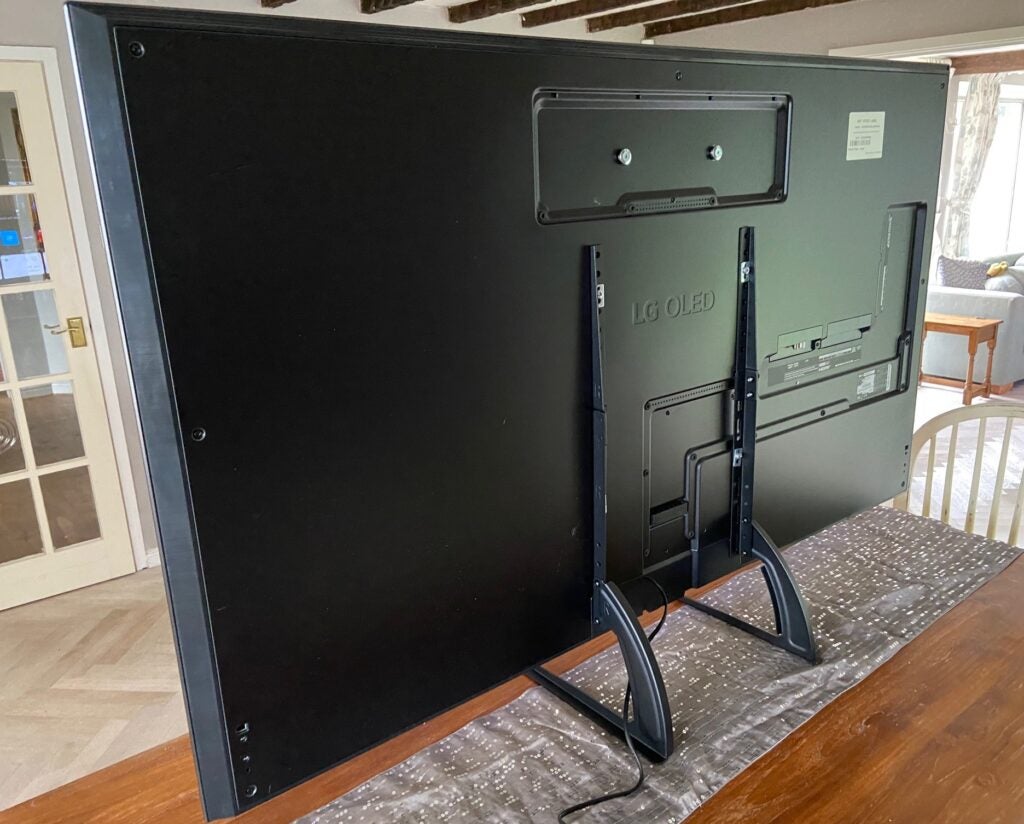
Rear view of the LG OLED65G1. Note that the legs aren’t LG’s official ones, which weren’t available for this review
It also drives other enhancements found on other 2021 LG OLED models from the C1 series up.
First, there are two new motion-handling options: a Natural one that removes the vast majority of judder without quite succumbing to full-blown ‘soap opera effect’, and a new Cinematic Movement option designed to deliver a more effective 24fps movie look.
Next, improvements to the AI system should yield better upscaling results when watching sub-4K content. And thirdly, LG’s AI Picture Pro option could benefit greatly from the addition of new Scenery Analysis and Body/Object identification systems.
The first of these identifies whether any incoming image can be classed as scenery, a night shot, or a cityscape, and applies specific rules to specific parts of the picture accordingly. So, for instance, it might raise – locally – the brightness and sharpness of detailing in very dark areas of a night scene to make it look more realistic and better maintain a sense of depth. Or, with a scenery shot it might sharpen areas showing trees or rubble to enhance their texture and presence, as well as injecting more potency int0 colours of, say, flowers and blue skies.
This idea of enhancements being applied specifically to local parts of the picture rather than the whole picture being treated the same ties in with the Body/Object ID system, too. This looks for people’s faces and defined objects in the image and again applies local enhancements to create what LG judges to be a more impactful, but also natural, look to the OLED65G1’s pictures.
The Alpha 9 Gen 4 processor has an audio trick up its sleeve, too: up-converting limited-channel audio sources to a 5.1.2-channel configuration. In other words, you get an additional pair of height channels to the virtual 5.1 up-conversion support on LG’s 2020 OLEDs. Note that the LG G1 OLED doesn’t ship with any external speakers; the multi-channel effects are all created using the speakers tucked into its svelte bodywork.
After many years of mostly just tinkering with its much-loved webOS smart interface, LG has finally decided it’s time for a real change. So while the webOS name stays, the new 6.0 generation delivers a totally new look, shifting away from the old, single-scrolling bar of content apps that used to appear superimposed over the bottom part of the image, in favour of a full-screen interface.
This completely shifts the content-finding emphasis, too. No longer is everything based around you selecting which app you want to open. Now it’s all about suggesting content the TV thinks you’ll like, based on analysis of your viewing habits and what’s currently trending. It also provides a more comprehensive search system, alongside help videos and notifications that can see you get the most from the TV’s smart features.
However, LG has thoughtfully retained the old horizontal app bar along the bottom of the new home screen, as well as letting you to scroll down to a few lower shelves of app-specific content showing highlighted videos from platforms such as YouTube and the BBC iPlayer.
Oddly, there’s no Netflix shelf, and no way of altering the order in which the shelves appear. The TV can also be a touch sluggish about bringing up its set-up menus, and attempts to streamline those menus don’t always feel helpful.
There are some nice new feature touches in webOS 6.0, such as being able to share the TV’s screen with your mobile device, and even share the TV’s audio through up to three different mobile devices. Overall, though, I’d anticipate that we’ll see a more flexible and refined version of this fairly radical webOS ‘break’ in 2022.
The LG G1 follows the past few LG OLED generations in supporting the HDR10, Dolby Vision and HLG HDR formats, but there’s still no support for the HDR10+ format.
Last but not least of the OLED65G1’s new features are its video game credentials. As well as featuring four HDMIs, all capable of supporting 4K at 120Hz in high dynamic range, as well as variable refresh rates in the Nvidia G-Sync, AMD FreeSync Premium and HDMI 2.1 varieties, it gets a new Game Optimiser menu. This provides clear information on some of the key gaming settings you’ve selected, and provides a wealth of new set-up tweaks designed to enhance your gaming experience.
These include a surprisingly effective selection of genre-based picture and sound modes, Standard and Boost low-latency modes (which gave hugely impressive results of just 12.4 and 9.4ms respectively with 60Hz feeds), and adjustments that let you tweak the bright and dark parts of the picture independently of each other.
Particularly significant is a new Fine Tune Dark Areas option within the VRR adjustments. It can compensate for an issue with LG OLED TVs, whereby the image’s gamma shifts when VRR sources are received, causing dark areas to look brighter.
LG OLED65G1 picture quality – A bit more brightness, a bit better colour, and much more AI brainpower
- The best picture quality ever on an LG OLED
- Spectacular gaming performance
- Brightness not quite as advanced as we’d hoped
The LG G1’s much-vaunted new OLED panel hardware definitely makes a difference. Albeit maybe not quite as much of a difference as us die-hard tech optimists might have been dreaming about.
On the brightness side, the set’s measured light output on a 10% white HDR box tops out (in the set’s Vivid preset) at just under 900 nits. This is slightly up on the measured figures of last year’s GX models, although not by a ‘night and day’ amount. The same small improvements can be seen with the OLED65G1’s Standard and True Cinema presets.
The biggest brightness improvements from the new G1 OLED panel are reserved for the Cinema and Filmmaker Mode settings. This initially felt counterintuitive, but it didn’t take long watching the Cinema and Filmmaker Mode settings to confirm that the OLED65G1’s panel has transformed these relatively accurate, standard-based settings from what I’d probably controversially describe as ‘worthy but dull’ in their previous iterations, to genuinely exciting and engaging settings. Not least because it feels like they’re delivering a much more convincing HDR experience.
Even with the other presets, the brightness difference between the OLED65G1 and last year’s GX feels stronger to your eyes than it measures. HDR highlights hit a little harder and, more noticeably, the G1 holds on to more brightness than its predecessor with bright HDR content that fills the whole screen.
These enhancements are particularly well suited to gaming graphics which, by their nature, tend to deliver relatively extreme imagery. Certainly, the daylight vistas of Old England in Assassin’s Creed Valhalla felt more intense and real than they did on any 2020 LG OLED, while HDR peaks, such as the reflections of sunlight on Eivor’s shield and axe, had a more realistic metallic glint to them.
In dark locations, meanwhile, flickering torches or chinks of moonlight coming through windows or doors stood out slightly more punchily against the darkness. And overall gaming images just look more dynamic, which also contributes to an enhanced sense of depth and space.
Gaming also provides the most stark evidence of how the OLED65G1’s new panel positively impacts colour. Again, the difference versus 2020 models is more subtle than explosive – we’re not talking about radically different levels of colour volume here. But there’s a richer, cleaner, more defined look to the relatively (versus regular video sources) pure colours of gaming environments. Especially when it comes to reds and greens.
Add the colour refinement to the enhanced brightness peaks and improved full-screen brightness, as well as the silky 60 and especially 120Hz refresh rates the OLED65G1 effortlessly handles, and HDR games can look truly spectacular in a way they’ve never looked before on any other OLED TV.
Going back to video, the extra colour refinement has an impact, too. Again, the difference chiefly lies in the rendering of relatively pure red, green and blue tints, rather than the subtler areas. There’s certainly nothing lost in those subtler areas, though. On the contrary, the latest processing delivers a substantial step forward when it comes to fine colour reproduction over last year’s third-generation Alpha 9 system. Especially if you deploy the TV’s AI Picture Pro mode.
The best way to sum up AI Picture Pro’s impact is that it makes everything – from colours and contrast to detail and depth – feel more refined. So, for instance, there’s almost no sign of colour striping noise in areas of fine colour blends. Areas of very fine detail seem to benefit from extra local filtering and more clarity than softer background areas. Skin tones gain a touch more emphasis without becoming plasticky or exaggerated. Dynamic range seems enhanced, and shadow details look more pronounced, without either looking forced or being accompanied by near-black noise. Objects in the image are more defined against backdrops without their edges looking too ‘hard’.
I could go on with more examples, but the main point is that LG has managed to increase the enhancements its AI Picture Pro system can deliver, while simultaneously – and just as importantly – reducing almost all unwanted and unnatural processing side-effects.
Some users will instinctively never want to let an automated processing system such as AI Picture Pro ‘dictate’ image terms to them. For most people, I’d strongly recommend giving the AI Picture Pro option at least a trial, as my view is that it does a pretty masterful job of optimising the OLED G1’s potential.
While a TV as outrageously talented as the OLED65G1 deserves to be fed a diet of 4K and HDR content as often as possible, its new processing also markedly improves LG’s upscaling of HD sources to 4K. It adds palpable amounts of detail more intelligently, adjusting the type and quantity of extra detail and sharpness added to different image elements to create a more natural look.
It’s important to finish our mostly glowing report of the OLED65G1’s outstanding picture quality by stressing that the OLED65G1’s enhanced brightness of colour does nothing to damage OLED’s traditional black-level talents. In fact, dark scenes look cleaner than they have on previous LG OLEDs – and, if anything, black levels look even darker thanks to the extra intensity of the bright highlights they stand in opposition to.
There are one or two flaws in the LG G1’s pictures. The new panel only pushes LG’s OLEDs into moderate rather than extreme new brightness territory. Also, while the new Fine Tune Dark Areas option has largely resolved the VRR gamma-shift issue, VRR can still cause distracting flickering in dark areas, as it does with LG’s 2019 and 2020 OLEDs.
The new default Natural motion processing option causes a few unwanted side-effects – but the new Cinema Movement setting proves an effective replacement, if you remember to switch to it.
Finally, a hint of magenta can slip into the picture from very wide viewing angles. Although, from the sort of angles I’m talking about, your viewing experience probably wouldn’t be very enjoyable anyway!
For the vast majority of the time, however, the G1 OLED’s pictures with both gaming and video sources come with an extreme ‘might cause drooling’ warning.
LG OLED65G1 sound quality – Mostly good, but beware the buzz and avoid the Atmos
- Impressive AI Sound Pro processing
- Dolby Atmos playback less effective than expected
- Prolonged bass can cause distracting buzzing
First impressions of the OLED65G1’s audio are mixed to say the least. Feeding in a few heavy-duty Dolby Atmos soundtracks finds the built-in speakers sounding short of oomph. There’s good clarity, detailing and effect steering when things are relatively quiet, but the sound starts to actually diminish significantly during Atmos moments, instead of swelling and opening up.
Fortunately, this strangely muted Atmos issue can be greatly improved by turning off Atmos in the TV’s menus and using LG’s AI Sound Pro processing instead. LG’s home-grown audio option optimises the sound to the TV’s speakers, and the result is a much more forward, impactful and aggressive sound that’s far more satisfying during those big movie moments.
While the LG G1 often sounds very good for a built-in TV sound system in its AI Sound mode, frustratingly, heavy bass lines can often cause the speakers to succumb to distortion, drop-out and distracting buzzing interference.
LG G1 OLED conclusion
Until the C1 arrives, we can’t say exactly how much better the OLED65G1 truly is than its cheaper sibling. However, suspicions from my truly spectacular experience with the G1 are that the extra capabilities of its evo panel make enough of a difference to justify its £2999 price. A price that, it’s also worth saying, compares well both with Panasonic’s previous OLED panel TVs, and Sony’s similar-sounding 65A90J.
You should buy the LG G1 OLED if…
- You want a serious big-screen gaming display
It supports all the next-gen gaming features you’ll need, and provides features galore to ensure games always look gorgeous
- You want to wall mount your next TV
The LG G1 is specifically designed for wall mounting, and only ships with a wall-mount bracket. Desktop feet cost extra.
- You can afford to pay more for enhanced brightness and colour
The OLED65G1 costs £500 more than the also likely very good OLED65C1.
You should not buy the LG G1 OLED if…
- You wanted it to become your Atmos sound system too
The set’s Dolby Atmos decoding disappoints. Although it sounds much better in its AI Sound Pro mode.
- You don’t want to wall-hang your TV
The LG G1 only ships with a wall mount and optional desktop feed add to its asking price.
- You aren’t prepared to treat it carefully to avoid screen burn
OLED technology is susceptible to permanent image retention from static channel logos and game graphics elements, so you should be prepared to handle the set with care when it comes to this sort of content.

